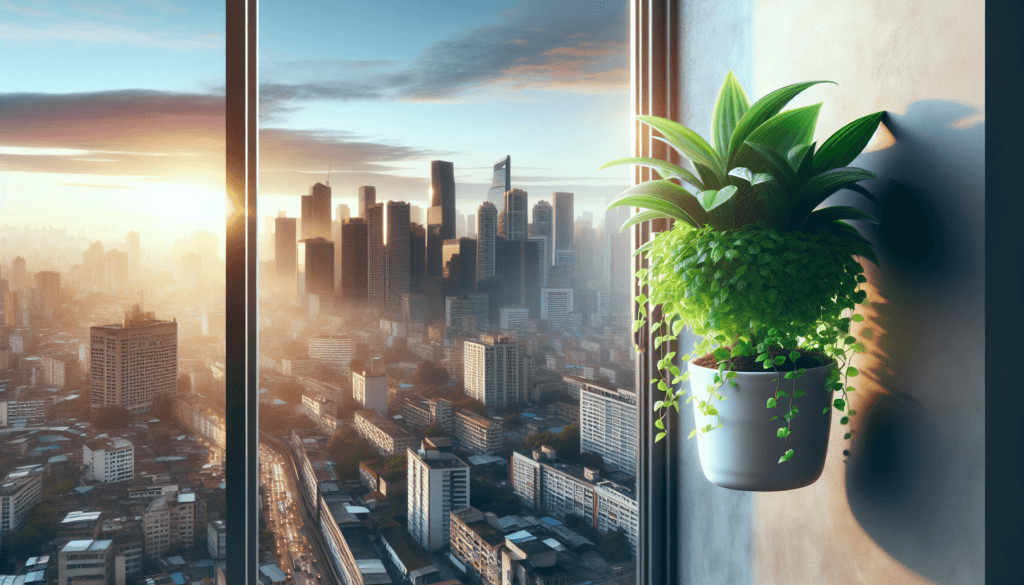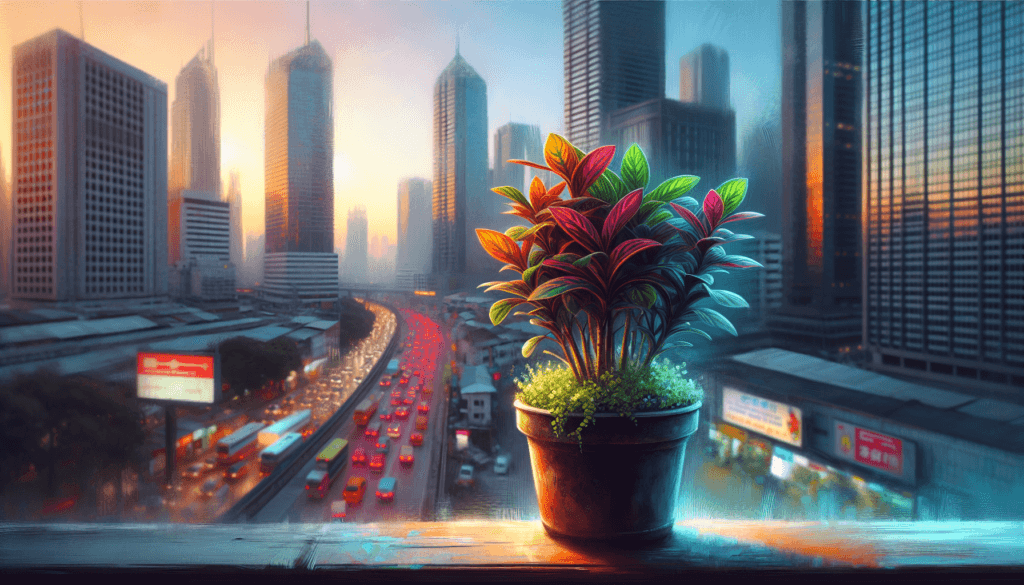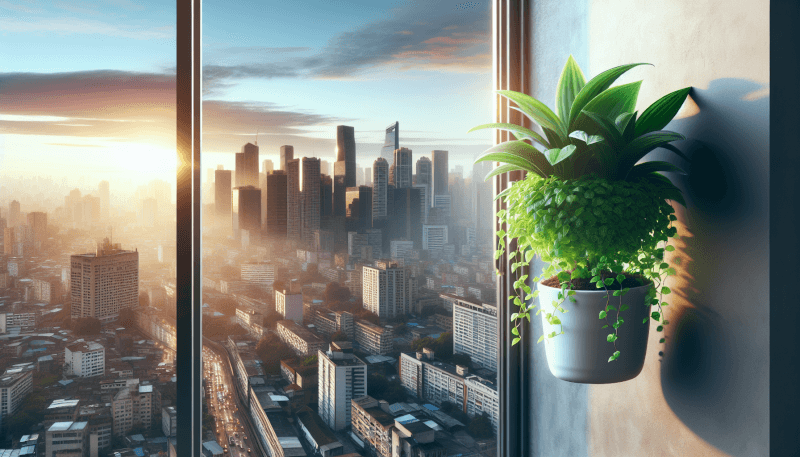Are you a city dweller with a yearning for greenery but limited space? Look no further! In this beginner’s guide to container gardening in the city, you will discover how to transform any small balcony, window sill, or even a corner of your living room into a thriving urban garden. With expert tips, easy-to-follow steps, and a variety of plant choices, you will soon be enjoying the beauty and benefits of gardening right in the heart of the city. So grab your pots, seeds, and watering cans, and let’s get started!

Choosing the Right Containers
When it comes to container gardening, choosing the right containers is essential. The first consideration is the size of the containers. You want to ensure that the containers are large enough to accommodate the plants’ root systems and provide ample space for growth. Additionally, larger containers tend to hold more soil, which helps with moisture retention and overall plant health.
Next, consider the material of the containers. There is a wide range of container materials available, including plastic, ceramic, terracotta, and wood. Each material has its own advantages and disadvantages. For example, plastic containers are lightweight and durable, while terracotta containers are porous, allowing for better drainage. Consider factors such as aesthetics, durability, and porosity when selecting the material for your containers.
Lastly, pay attention to the drainage in the containers. Proper drainage is crucial to prevent waterlogging, which can lead to root rot and other plant diseases. Look for containers with drainage holes at the bottom or consider adding drainage holes if they are not already present. Additionally, you can place a layer of gravel or broken pottery pieces at the bottom of the container to promote better drainage.
Selecting the Right Soil and Fertilizer
The type of soil mix you use for container gardening plays a significant role in the success of your plants. Consider using a high-quality potting mix that contains a blend of organic matter, such as compost or aged manure, and materials like perlite or vermiculite for improved drainage. Avoid using regular garden soil, as it can become compacted and hinder root growth.
When it comes to choosing the right fertilizer, there are two main options: organic and synthetic fertilizers. Organic fertilizers, such as compost or fish emulsion, are derived from natural sources and release nutrients slowly, providing a steady supply of nourishment to the plants. Synthetic fertilizers, on the other hand, are manufactured and typically contain specific ratios of essential nutrients. Consider your preferences and the specific needs of your plants when deciding which type of fertilizer to use.
Picking the Perfect Plants
Consider the sunlight requirements of the plants you want to grow before making your selection. Some plants thrive in full sun, while others prefer partial shade. Assess the exposure to sunlight in your gardening space and choose plants accordingly. If you have limited access to direct sunlight, opt for shade-loving or low-light plants.
For those with limited space, choosing plants that are well-suited for small spaces is crucial. Look for compact varieties or plants that have a trailing or cascading growth habit. These plants can be grown in hanging baskets or vertically on trellises and walls, making the most of limited space while still providing a beautiful display.
When selecting suitable plant varieties, consider factors such as climate, maintenance requirements, and personal preferences. Choose plants that are known to thrive in your region and require minimal care if you are a beginner. Additionally, consider plants that offer versatile uses, such as herbs or edible flowers, to enhance your gardening experience.
Preparing and Planting
Once you have chosen your containers and plants, it’s time to prepare for planting. Before filling the containers with soil, ensure that they are clean and free from any debris or pests. Wash or sanitize the containers to prevent any potential diseases or pests from affecting your plants.
When planting, consider the size and growth habit of your chosen plants. Place taller plants towards the center or back of the container, and shorter plants towards the edges. This arrangement ensures that all plants receive adequate sunlight without shading each other. Additionally, leave sufficient space between plants to allow for growth and prevent overcrowding.
When it comes to spacing and arrangement, consider creating attractive combinations by mixing different plant varieties with complementary colors or textures. This will add visual interest to your container garden and create a harmonious display.

Watering and Maintenance
Proper watering techniques are vital to the success of your container garden. Generally, it’s best to water your plants when the top inch of soil feels dry to the touch. It’s important to water thoroughly, ensuring that the water reaches the entire root system. However, be mindful not to overwater, as this can lead to root rot. Always allow excess water to drain out of the containers to prevent waterlogging.
Monitoring moisture levels is crucial, especially during hot or dry periods. Consider using a moisture meter or sticking your finger into the soil to check for moisture. Adjust your watering frequency accordingly to prevent under or overwatering.
Pest management is another important aspect of container gardening. Regularly inspect your plants for any signs of pests, such as chewed leaves or discolored spots. If you notice any pests, identify them and choose the appropriate method of control, whether it be manual removal, organic pesticides, or companion planting techniques.
Providing Adequate Light
Understanding the light requirements of your plants is essential for their growth and development. Some plants thrive in full sun, requiring at least six hours of direct sunlight each day. Others prefer partial shade or indirect light. Observe the light conditions in your gardening space and position your containers accordingly.
If you have limited access to natural light, consider utilizing artificial lighting. LED grow lights are a popular choice for indoor gardening and can provide the necessary light spectrum for plant growth. Position the lights at an appropriate distance from the plants and adjust the duration of lighting based on the plant’s specific requirements.
To maximize light exposure, position your plants strategically. Rotate the containers periodically to ensure equal exposure on all sides. Additionally, keep larger plants from shading smaller ones, as this can hinder their growth and development.

Feeding and Pruning
Feeding container plants regularly with the appropriate nutrients is essential for their overall health and productivity. Consider using a balanced, water-soluble fertilizer that provides essential macronutrients, such as nitrogen, phosphorus, and potassium. Follow the instructions on the fertilizer packaging for application rates and frequency.
Pruning and trimming your container plants help maintain their shape and promote healthy growth. Regularly remove dead or damaged leaves to prevent the spread of diseases and pests. Additionally, prune back overgrown branches to encourage bushier growth and maintain the desired size and shape of the plant. Remember to use clean, sharp pruning tools to minimize damage to the plants.
Dealing with Space Constraints
If you have limited space for your container garden, there are various creative solutions to make the most of it. Utilize vertical space by adding trellises or stakes to support climbing plants. This not only saves ground space but also adds vertical interest to your garden.
Hanging and suspended gardens are another excellent option for small spaces. Hang containers from walls, balconies, or ceilings to create a beautiful display that maximizes space. Consider using trailing or cascading plants for hanging baskets to add more visual appeal.
Innovative solutions such as using wall-mounted planters, repurposing old containers, or creating tiered gardens can also help make the most of limited space. Get creative with your designs and think outside the box to create a unique and beautiful container garden.

Managing Temperature and Climate
Plants in containers are more susceptible to extreme temperatures compared to those in the ground. Ensure that your plants are protected from extreme heat or cold by providing shade during hot periods and bringing them indoors during frost or cold snaps.
Seasonal considerations are also important in container gardening. Some plants flourish in specific seasons, such as spring or summer, while others are better suited for fall or winter. Plan your container garden accordingly, considering the specific growth and flowering periods of your chosen plants.
Choosing heat- and cold-tolerant plants is essential, especially if you experience extreme temperature fluctuations. Consult local gardening resources or seek advice from experienced gardeners to ensure that you select plants suitable for your climate.
Harvesting and Enjoying the Fruits
Knowing when to harvest your crops is crucial to enjoy the fruits of your labor. Each plant has different indicators of readiness for harvest, such as color, size, or ripeness. Refer to specific plant guides or reputable gardening resources for guidance on when to harvest your chosen plants.
Harvesting techniques vary depending on the type of plant. Use sharp pruning shears, scissors, or your hands to harvest fruits, vegetables, or herbs. Handle the harvested produce gently to avoid damage and store them properly to preserve their quality.
Once you have harvested your crops, the enjoyment begins. Whether it’s cooking with homegrown herbs, savoring freshly picked vegetables, or decorating your space with beautiful cut flowers, take pride in the fulfillment of your container gardening experience.
Container gardening in the city can provide a rewarding and fulfilling experience for beginners. By choosing the right containers, soil, and plants, preparing the containers properly, providing adequate care and maintenance, utilizing available space creatively, and considering temperature and climate factors, you can create a thriving container garden right in your urban oasis. So, grab your containers, get your hands dirty, and embark on your container gardening journey. Happy gardening!



